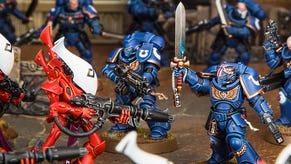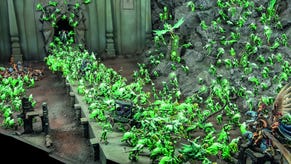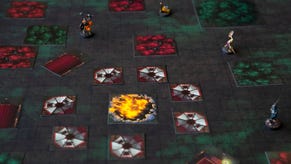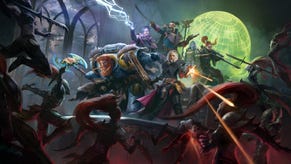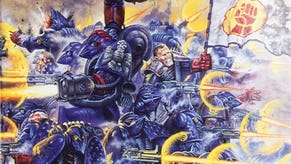Warhammer 40k’s 10th Edition has turned me around from the missteps of 9E
Consumed by the Leviathan.
The unveiling of Warhammer 40,000 10th edition’s new boxed set was undoubtedly the headline event at Warhammer Fest 2023. Going by the ominous moniker (ominiker? Is that anything?) Leviathan, it’s the hefty flagship product you’d expect, stuffed full of brand new minis, the new rulebook and a set of mission cards. The reveal, streamed on Twitch, kicked off the weekend and a massive Terminator Space Marine statue loomed over proceedings to remind you who the star of the show was.
I make no secret of the fact that I have a bit of a love/hate relationship with 40k. I adore the setting and the miniatures and have very fond memories of playing the second and third editions way back when, but after coming back to the hobby a couple of years ago, I realised that I didn’t get on with Ninth Edition at all.
The underlying structure of 9E is typical Warhammer stuff, but there are unnecessarily fiddly layers of complexity stacked on top. Stratagems exemplify this issue, with just too many very specific use-case options to hold in your brain at once. There are ways around this - you don’t have to play with stratagems at all, for instance - but armies can lose a lot of flavour without them and they are the norm for any kind of tournament.
The underlying structure of 9E is typical Warhammer stuff, but there are unnecessarily fiddly layers of complexity stacked on top.
Suffice to say it was enough to put me off the game and I was happy to look for my mini kicks elsewhere, despite the fact I’d painted up a good few pieces and it made me sad to see them gathering dust.
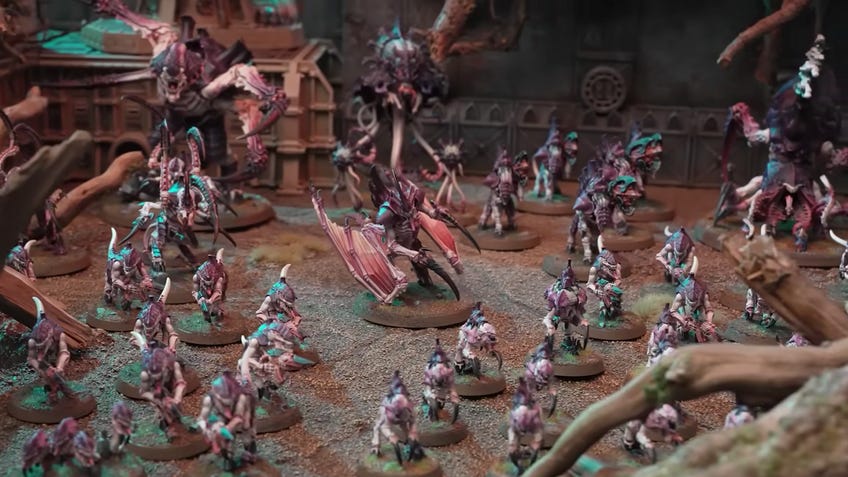
When 10th edition was announced back in March, I immediately sat up and paid attention - and not just because it’s my job. Games Workshop has been keen to push “simplified - but not simple” as the message for the new 40k, which is exactly what I wanted to hear. Complexity is fine when it adds depth to the game, but there are often simpler means to achieve the same ends, something I think of as elegant design.
Everything GW has revealed about the new edition speaks of elegance. Army and faction rules have been designed to take up just two pages, with the vast majority of the rules contained in unit datasheets. These have been completely redesigned as convenient cards that tell you everything you need to know about your units’ stats, attacks and special rules at a glance. GW has promised that every datasheet for 40k will be available as a free download on day one, as well as being sold as physical decks.
This isn’t an entirely new concept. Stopgap army rules to tide people over until codices are released have been around since the Codex Imperialis and Codex Army Lists books included in 40k’s second-edition box. However, these are often a very stripped-down version of the rules that get tossed out wholesale when the codex does arrive. (And that can be a really long wait - just ask the Squat players who waited seven editions for a codex.)
Everything Games Workshop has revealed about the new edition speaks of elegance.
This time around, GW’s intentions are a little different. For starters, it’s not planning on changing the datasheets if it can be avoided. While I’m sure there will be plenty of balance tweaks happening, the plan is that the unit datasheets provided with the launch of 10E will look pretty much the same when the appropriate codex does drop. It’s also adopting a “one in, one out” philosophy for faction rules, with new rules replacing the old ones wholesale.
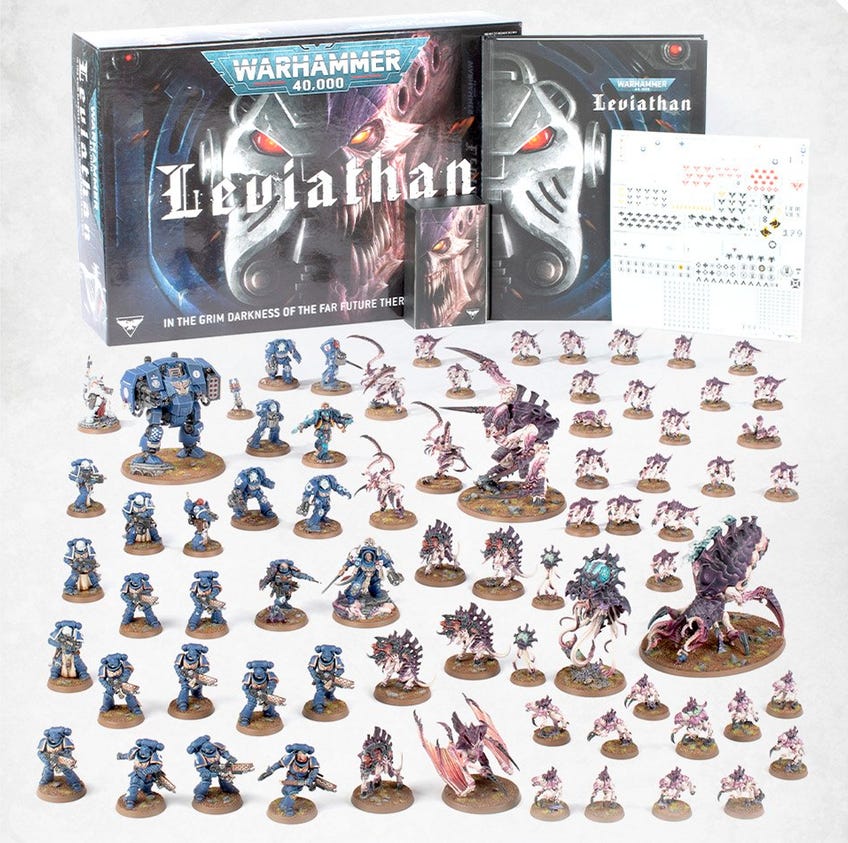
Depending on the army you play in 40k, that might not seem like a huge deal. But if you play one of the subfactions large enough to get their own codex (which I do - my Space Marine chapter uses the Black Templars rules), this is going to be a boon. In Ninth Edition, I have access to almost everything in Codex Space Marines, which has by far the largest number of units, as well as Codex Black Templars. I remember it taking me ages to figure out which generic Space Marine rules applied to my army, and which were overwritten by the chapter-specific rules.
In 10th Edition, the two pages of Black Templars faction rules will replace the basic Space Marine ones, instead of supplementing them. Not only is this going to be much quicker and easier to reference in game, it also opens up a lot of interesting army-building possibilities.
One of the more intriguing teases from the 10th edition reveals so far is that all the Space Marine datacards have their faction listed as “Oath of Moment”, a reference to one of their pre-battle rituals. This opens up the possibility for a lot of other Space Marine armies representing different styles of deployment. GW has done something like this in 9E with Armies of Renown, such as the Vanguard Spearhead from War Zone Nachmund: Vigilus Alone - a force focused on fast, sneaky Space Marine units in the lighter Phobos armour that provided a different take on 40k’s poster boys. The idea of this kind of thing being built into the new edition from the start is very exciting.
Everything GW has shown suggests a game moving in precisely the right direction.
The other Big New Exciting Thing in 10th Edition is the Combat Patrol format. Named for 40k’s starter sets for each faction, Combat Patrol is essentially a pre-constructed format designed to balance the contents of each existing Combat Patrol box as a complete force. While Combat Patrol shares the same core rules as regular 40k, each self-contained force has its own objectives, stratagems and the like, which have all been designed to create balanced play, even with the inevitable points disparities between the Combat Patrol boxes. With all the rules required for this format freely available, the only cost of entry is the miniatures themselves - and painting up a Combat Patrol is going to be much less daunting than a 1,000-point army.
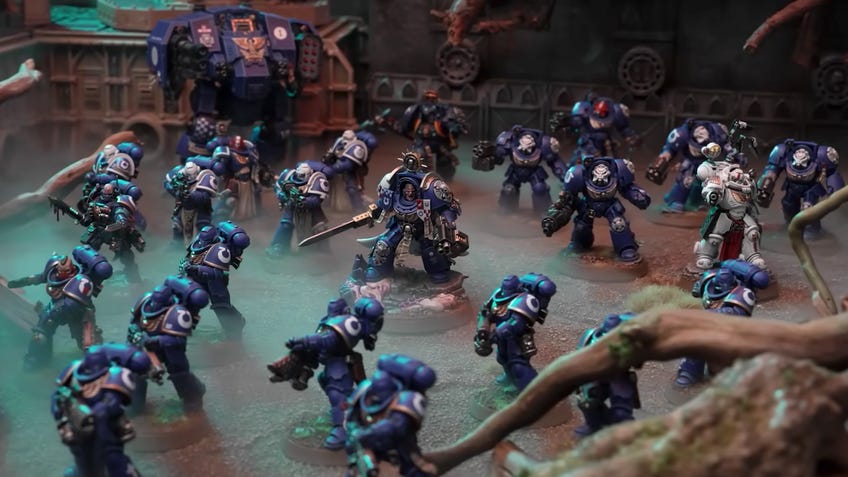
Many existing players, myself included, didn’t find the thought of Combat Patrol particularly appealing at first. For me, making my army my own is a huge part of wargaming. For others, the problem is the lack of list-building - or that they have existing collections that don’t fit any of the Combat Patrol lists. I absolutely thought it was a great idea for new players, or when starting a new army, but didn’t see it as something I’d go for.
The more I’ve thought about it, though, the more Combat Patrol appeals. While it’s important to me that I can put my own stamp on my miniatures, that’s much more about lore and modelling and painting than it is list composition. I also love smaller projects that sit somewhere between the skirmish size of Kill Team and a full army that allow me to paint a range of minis without having to paint dozens of the same thing. Combat Patrol is perfect for doing that scale of project and still having a usable gaming army at the end of it.
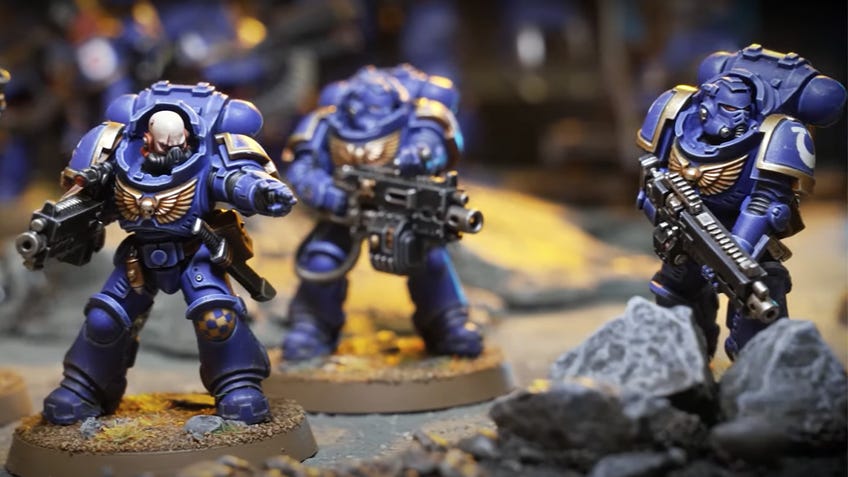
There’s also nothing tying Combat Patrol exclusively to Combat Patrol boxes, despite the name. GW has recently shown off the two Combat Patrols that can be made with the contents of the Leviathan box, neither of which uses anywhere close to all the miniatures for the corresponding faction. In addition, GW could quite easily release new Combat Patrols in White Dwarf or online, expanding the options for folks with existing miniature collections.
While we don’t have an exact release date, the launch of 10th Edition with the Leviathan boxed set is only a few weeks away. I, for one, cannot wait. Everything GW has shown suggests a game moving in precisely the right direction. I’m ready to enjoy Warhammer 40k the game as much as I love the world and minis again.



